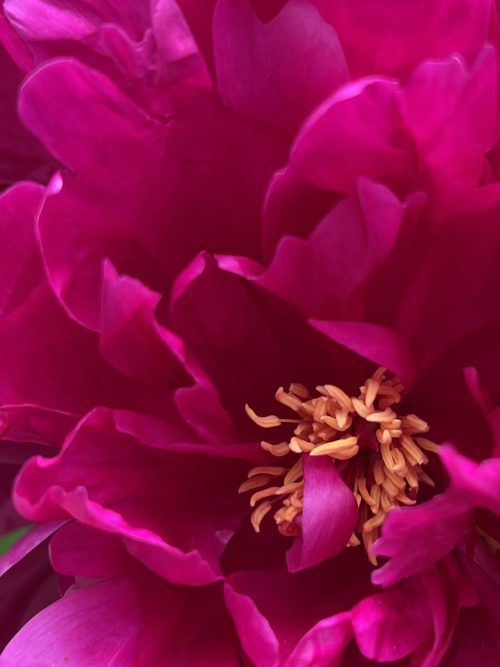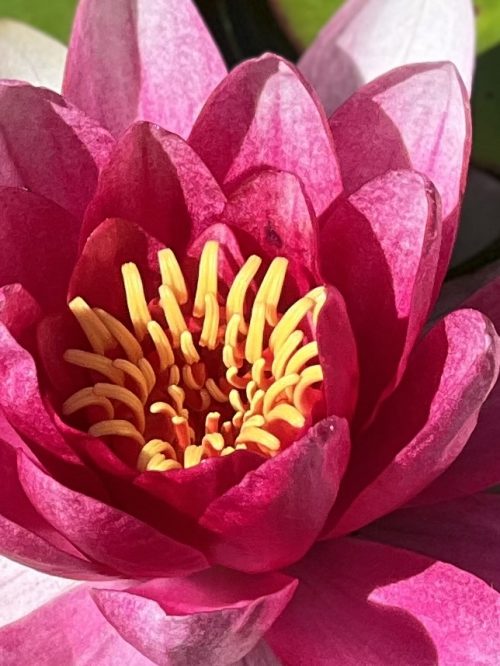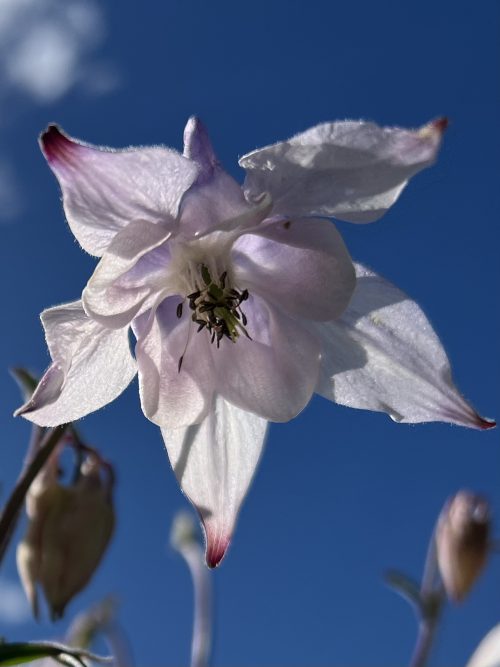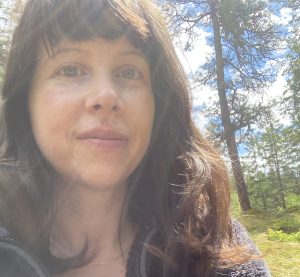I recently went through the process of researching, planning and planting an Indigenous plant garden.
All of the plants selected are native to this region and support specific butterflies and wild bumblebees, including an eco-regional milkweed plant to help bring back monarch butterflies to the area.
The local native plant society supplied the seedlings and helped me get started. During the process, I learned about the importance of late blooms—plants that flower in the late summer and fall—for supporting pollinators. Healthy, thriving ecosystems need late bloomers.
Reflecting on the idea of the ‘late bloomer’, especially since turning 40, I can often look at myself, my spiritual and personal growth, and question what progress has been made after years of effort.

Thinking of Swami Radha’s story, the Ashram’s founder, I recall that she hadn’t pursued a spiritual path until she was over the age of 40. Everything that she accomplished, that we are still benefiting from today, happened in the second half of her life, between her early 40s, right up until she transitioned in her mid-80s.
Through this reflection on the garden, coming to an acceptance of the idea that everything is blooming in its own timing, and everybody’s unique path is valuable and important to the whole human garden, I can relax into and trust my own Divine timing—while still making sincere effort toward my personal and spiritual ideals.
In a rich metaphor that prefaces her progressive relaxation meditation, Swami Radha says:
Did you ever look at your body as it were a garden? If you would take a walk through this unusual garden, you would discover something most beautiful and interesting.
A good gardener watches the plants, their growths and needs quite regularly with good attention, yet never interferes but rather tries to support where necessary.
This particular way of relaxation is most enjoyable and refreshing. Because you are walking through your body garden, getting a close look, putting attention where needed. And the body pays this kindness back manifold in good health, strength and proper functioning.
We need to have time for ourselves, so we can deal with ourselves properly.

Turning the precious resource of our attention inward, consciously choosing relaxation, and stepping out of ‘fight or flight’ mode, isn’t just a way of tending to ourselves and offering ourselves care, it also has the potential to benefit others. Committing to showing up in the world with a calm and regulated nervous system, with kind, measured responses, can be a radical act of peace.
We often talk about peace, and wishing for peace on earth, as though it is something that happens ‘out there’ somewhere, outside of ourselves. Peace is something that we can all work towards creating, one peaceful person, one relaxed, calm nervous system at a time. “Peace in oneself, peace in the world,” Thich Nhat Hanh has written. Being mindful of what we are cultivating, staying in touch with the calm, peaceful part of ourselves, and engaging in a regular practice to build that capacity, we can make a real difference.
Relaxation can also be a gateway to spiritual experience. Coming home to ourselves, connecting with and attending to our body is so powerful, in part, because our body only exists in the present moment, it can’t exist in the past or the future. When we attend and attune to ourselves with awareness, we step into that current of energy, that power of presence.
In the lineage of Shambhala Buddhism, this state is known as Windhorse. Neuroscientists might call it interoception, and there’s a growing volume of research supporting the importance of this body-based awareness, and the benefits of being present with ourselves, on physical and mental health and wellbeing.
The first aphorism of the Yoga Sutras of Patanjali, widely interpreted as “Yoga is Now,” places the present moment at the foundation of yoga. While yoga and indeed all of life happens here and now, there is also a sense that walking the path of yoga is a hard-won process that unfolds throughout many years (if not lifetimes) of diligent effort. The culmination of that effort is captured in the symbol of the mind unfolding as a thousand petaled lotus. A blooming of consciousness.
Yoga welcomes late bloomers. Though the emphasis doesn’t seem to be so much on the timing, as the sincerity of effort.

In the Yoga of Healing, in a chapter called “Accessing the Body’s Wisdom,” Swami Radha says:
There is a wisdom in the cells of the body. There is a wisdom to which the conscious mind apparently has no access. The body has its own power of knowledge. We have to become aware of that power.
Some time ago I committed to pausing at least once a day to go through Swami Radha’s body-garden relaxation exercise, for 40 days. A process of stopping to attend to each part of my body and consciously bringing relaxation there. At the end of that time, I kept going because something extraordinary began to happen, in taking small moments throughout my day to rest deeply. It can only be described as experiencing a fragrant bed of flowers blooming in my heart.
Relaxation connected me with a sanctuary within myself. A place that I can choose to return to at any time.
In a chapter of Living the Practice titled ”Sacred Ground,” Swami Radhananda says:
When we begin to study the ground we live on, our own earth, it’s amazing to see how creative it is.
In spiritual life, we make a connection between the earth and the Divine—the two work together.
The earth creates and supports life because it has all the elements that we need to survive—oxygen, water, light.
Living on sacred ground would mean that we have all of the elements to support our spiritual life, an inner life where we can build the foundation of character, courage and awareness.
Come home to the sacred ground of your body, the earth that’s rich and deep there. Relax into the sacred ground of your heart, the temple where a bed of fragrant flowers are blooming. Find the gateway and follow the bridge from there, to the fertile, sacred ground of your life. What kind of garden are you tending?

Tracy arrived at the Ashram in January 2022 for the life-changing, transformative Yoga Development Course and is still here.
Photo credits: Francesca Cogorno
